Have you voted in our inaugural BBP Best in Beauty Awards? Voting is open until 12/23 and the results will be made public on 12/26🏆💄
In today’s post:
Q (not) A Beauty & Pop Culture Questions
What About The South? A Review of "The Culture: Hip Hop and Contemporary Art" Exhibit
Did Doechii’s recent looks make you curious about face tape? Same. I wasn’t familiar with face tape before her use made a few headlines. This article does a great job of explaining its use. Who knew?
Is it really a big deal if celebrities deny having plastic surgery? Ellen Atlanta argues that when celebs attribute their physical transformations to positive life changes like getting sober or being kinder, they present “...an almost fairytale narrative that physical beauty is a reward for good behaviour.” While celebrities don’t owe fans information about their cosmetic choices, denying them or attributing them to “positive vibes,” puts excludes important information about resources and risks involved in achieving such a look.
Is the Ulta Beauty x Mini Brands collab for adults or children? It seems like the Mini Brand eggs, filled with “Barbie-sized” makeup and skincare items, are fun collectibles for adults. However, the recent interest in Sephora and Ulta leaves me wondering if the company intentionally targets kids who play with these toys. It’s definitely sketchy.
What About The South? A Review of "The Culture: Hip Hop and Contemporary Art" Exhibit
During one of my grad courses, our professor asked us to analyze some portraits. I didn’t have much experience engaging with art, so I asked what we should be looking for. She invited me to change my perspective to the piece by considering it from far away, and up close. While standing next to her, and much closer to the work, she asked if the piece seemed different at all than when Iwas farther away. I realized that up close, the person in the picture seemed larger than me and I was “looking up” at them. This slight shift taught me to take in art from different angles, so that I might better understand what a piece may tell me.
Tschabalala Self’s large-scale piece, “Setta’s Room 1996,” welcomed visitors into The Culture: Hip Hop and Contemporary Art in the 21st Century at the Baltimore Museum of Art. Like most of Self’s works, the large canvas features a Black woman at its center. She is wearing a trendy set, her hand is wrapped around a corded phone, and an iconic poster of Lil Kim is plastered on the wall behind her. The piece is a great introduction to the exhibit which highlights Black women’s contributions to and interest in hip-hop throughout.
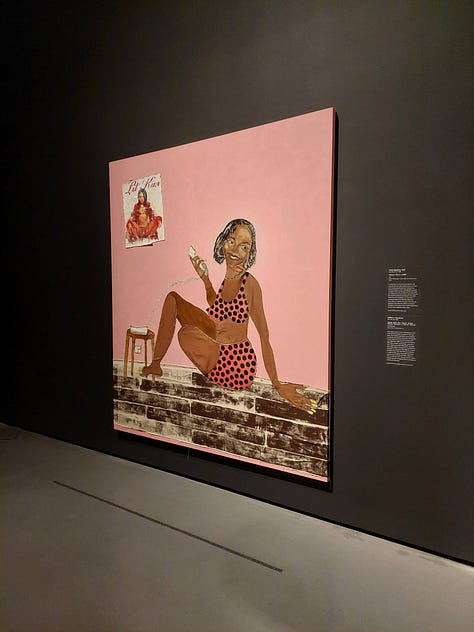
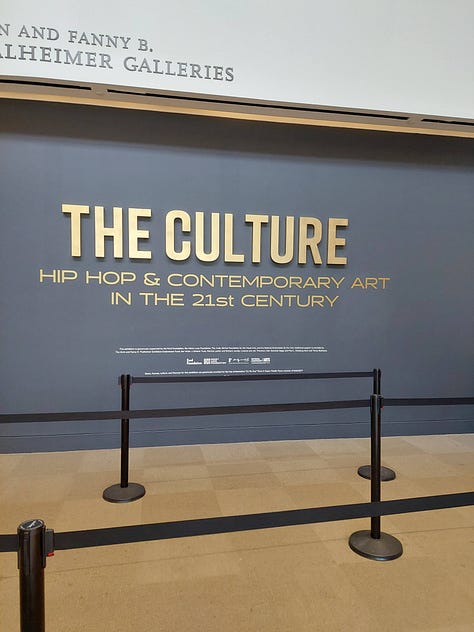
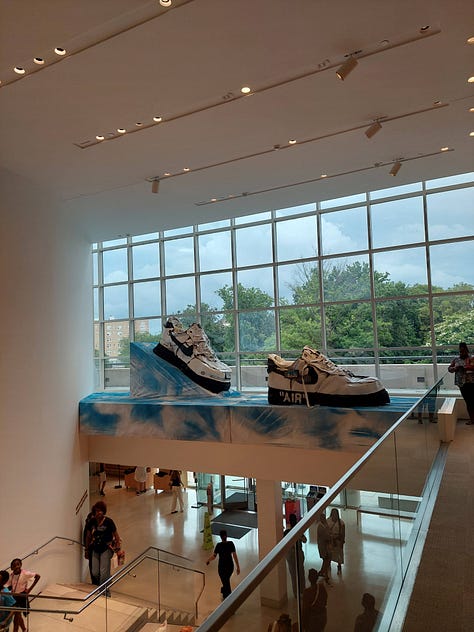
The rest of the exhibit does not disappoint. There are literal examples of hip-hop’s influence on display in photographs of Run DMC, and figurative examples like Dapper Dan’s iconic clothing. One of my favorite displays are the replicas of Lil Kim’s most iconic wigs alongside the magazine covers she flaunted them on. Some beautiful sculptures and portraits illuminate Black beauty and style choices.
After turning multiple corners of the exhibit, and stepping towards and away from canvases, I realized I was looking for something. I hadn’t read the supplemental catalog, The Culture, so I didn’t know what pieces might be on display. And, I’d done a great job of avoiding any spoilers on TikTok by backing out of any videos that even appeared to show viewers what lay behind the doors of the BMA.
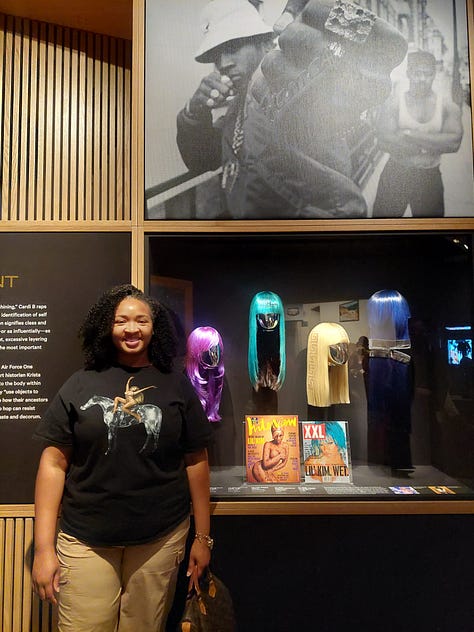
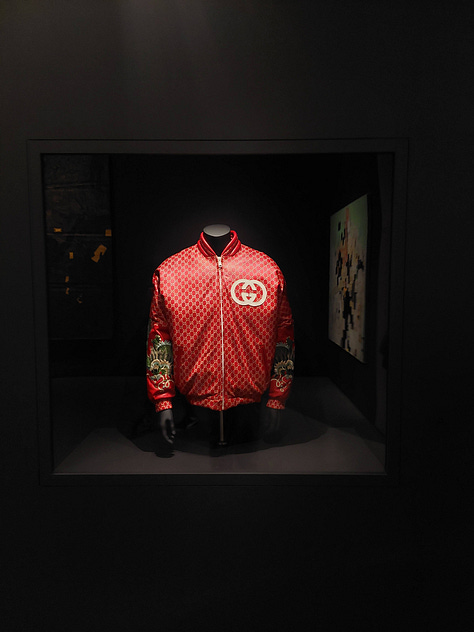
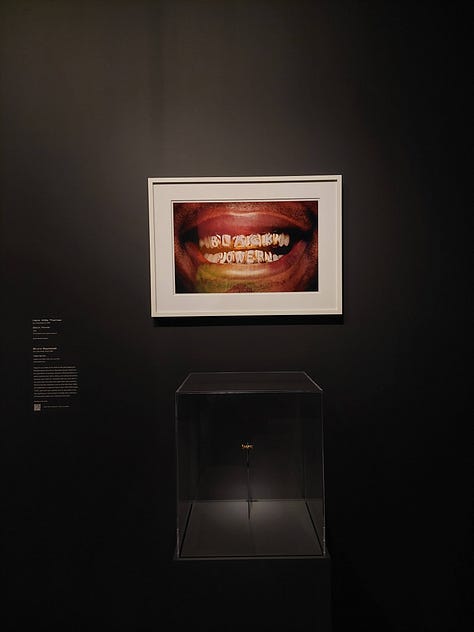
As I approached the end of the exhibit, I noticed a mural-styled painting that featured multiple female artists, including Meg Thee Stallion and The City Girls, I realized what I was looking for: The South. The exhibit did an incredible job of highlighting the artists that shaped Hip-Hop and their accouterments. The exhibit had no shortage of examples of Black women’s contributions to the genre in music, fashion, production, or beauty.
However, this was not true for the South, women, men, or non-binary rappers. I wonder how the South could still be excluded so heavily, in a national traveling exhibit in 2023? I know that the featured works change according to the exhibit’s location. For example, the current display in Toronto features at least two paintings of Drake that I don’t recall seeing in the BMA. Kevin Bourne writes about the inclusion of Canadian rappers as “an exciting opportunity to affirm our place in the global conversation” about hip-hop. And good for them! I’m sure that when The Culture debuted in Houston, there were relevant works about Texas and Southern artists that shaped/reshaped the genre.
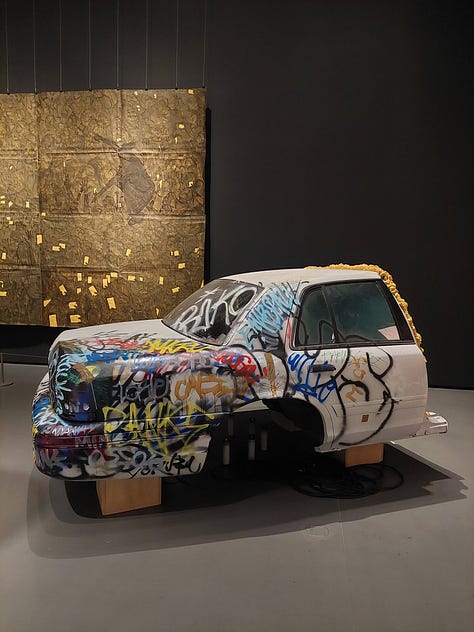
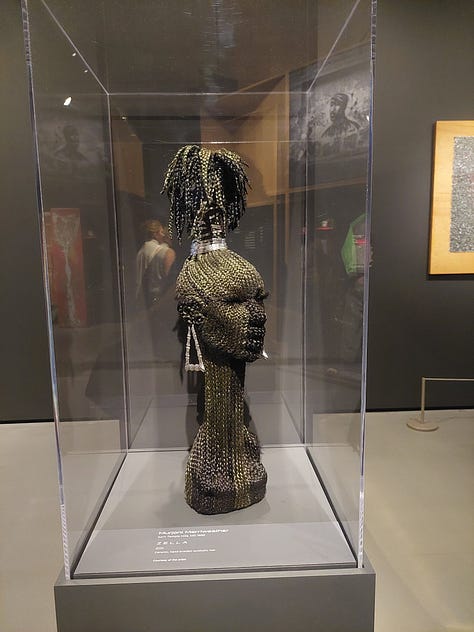
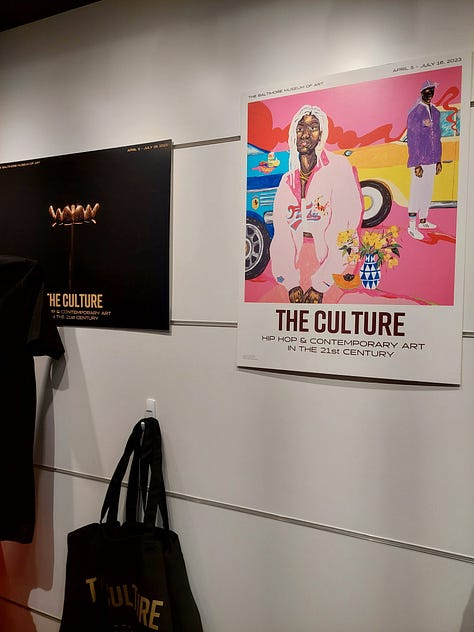
But by the time the display made its way up North, those aspects had been stripped away. Note that the West Coast is a staple in the exhibit and a short film highlighting it has traveled to Toronto. Southern influence, especially Southern women’s influence on hip-hop, isn’t supplemental it is foundational.
How could an exhibit with a focus on grills not include the South? On a wall dedicated to exploring the power of sex appeal, how could Trina not be prominently featured? A mention of innovative music videos without discussing Missy is just incomplete. How can we talk about how differently hip-hop looked and sounded in different regions, with no mention of Outkast forcing its gatekeepers to recognize the South?
I was taught to consider a work of art in relation to the pieces that surround it, and myself. But what happens when there is no piece to consider? Or, as in the case with this exhibit, there are so few pieces that render the South what then?
In place of the rich Southern experience that wasn’t at the BMA, here’s a playlist of the sounds that would’ve played in the background of my room if I were the girl in Tschabalala Self’s portrait.



